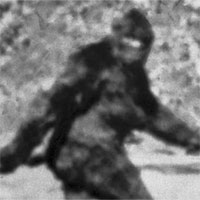The adult human skeleton consists of 206 pieces, connected in a network, performing many functions such as shaping the body frame, supporting movement and producing new blood cells.
>> Human bones get lighter over time
 The skeleton of a newborn baby contains about 300 components, which are a mixture of bone and cartilage. The cartilage gradually hardens into bone in a process called ossification. Over time, the “plus” bones in infants fuse to form larger bones, reducing the number of bones to 206 by adulthood. (Photo: Shutterstock)
The skeleton of a newborn baby contains about 300 components, which are a mixture of bone and cartilage. The cartilage gradually hardens into bone in a process called ossification. Over time, the “plus” bones in infants fuse to form larger bones, reducing the number of bones to 206 by adulthood. (Photo: Shutterstock)

Bones are not evenly distributed throughout the body. They are concentrated mainly on the hands and feet. Each hand has 27 bones and each foot has 26 bones. In total, the hands and feet have 106 bones, which is more than half of the bones in the human muscle. (Image: Shutterstock)

The hyoid bone is a horseshoe-shaped bone in the throat, located between the chin and the thyroid cartilage. This is the only bone in the body that is not connected to any other bones. The hyoid bone combines with the larynx and tongue to create a human voice. (Photo: Null)

Bones are made up of active living cells. So it is also likely to have benign tumors and even cancer. In 2013, scientists found a tumor in the ribs of a Neanderthal, dating from 120,000 to 130,000 years. This is the oldest human tumor ever discovered. (Image: Shutterstock)

Vertebrates make up only 2% of the total number of animals on Earth. The remaining 98% of species are invertebrates, such as insects, spiders, and mollusks. (Photo: Rob Robbins)

Bones are very strong and hard, even harder than steel. However, they are not the strongest structures in the body. This position belongs to another part, the enamel layer (concentrated with a high concentration of minerals, mainly calcium salts). (Photo: Stoughtondental)

Humans have known how to treat fractures for thousands of years. In the book Edwin Smith Papyrus from Ancient Egypt (circa 1600 BC) the author describes the treatment for fractures, including a broken arm. The book states that we need to rearrange the bone fragments in the correct position and then cover the wound with linen. (Photo: Joseph Castro/Live Science)

About 3,000 years ago, the ancient Egyptians created the first prosthetic, an artificial big toe. In 2011, scientists showed that Egyptians with prosthetic toes could walk more easily with sandals than those who lost their toes without a replacement. (Photo: PNAS)

Most adults have 24 ribs (12 pairs). However, one in 500 people contains an extra rib, called a cervical rib. It develops from the lower part of the neck, just above the collarbone. This extra rib can cause health problems if it presses against a nearby blood vessel or nerve. (Photo: AAAS)

Humans do not directly manipulate bones. When we move our arms, legs or any other part of the body, we are commanding the muscles attached to the bones to move. (Photo: School of Medicine and BioDigital Systems)

Bones cause you stress. In the human body, the sympathetic nervous system is the mechanism our body relies on to get ready to deal with stressful situations. It is often referred to as the “fight-or-flight response” (anti-stress response) and is linked to the release of the hormone adrenaline when exposed to a stressful situation. But recently, researchers have identified osteocalcin, a hormone secreted by bone-forming cells, that plays an important role in this stress response. Mice bred without the ability to produce osteocalcin do not have a fight-or-flight response in stressful situations compared to normal mice. The scientists also studied osteocalcin levels in humans, and they found that levels of the substance in blood and urine increased after study participants were exposed to stress. And yet, they showed that osteocalcin “turned off” the parasympathetic rest-and-digest mechanism that allows the fight-or-flight response to be triggered. It’s interesting! Up until now, we only knew that the physical function of bones is to protect the human body – for example, the ribs protect our most important organs – but it turns out, bones also have shoulders. physiological role in keeping us safe, too.

The smallest bones are located in the ear . The smallest bones in the human body are the malleus (malleus), the incus (anvil), and the stapes (stapes). These bones are collectively known as “ossicles” – Latin for “tiny bones”, and their role is to transmit sound vibrations from the air into the fluid in the inner ear. They are not only the smallest bones in the body but also the only bones that do not reorganize after 1 year of age. A slight change in the shape of these bones can affect our vision. These small bones are also important in archaeological and forensic activities. Because they form while we’re still in the womb, isotope analysis can tell us about the mother’s diet and health in unidentified human skeletons.

Bone marrow isn’t just about filling the void. Long bones, like the femur, are filled with marrow made up of fat cells, blood cells, and immune cells. In children, bone marrow is red, reflecting its role in making blood cells. In adults, bone marrow is yellow and contains 10% of total body fat. It was long thought that the fat cells in the bone marrow were just there to fill the void, but scientists have now discovered that the fat inside the bones has metabolic functions. and important endocrine, affecting the whole human body.

